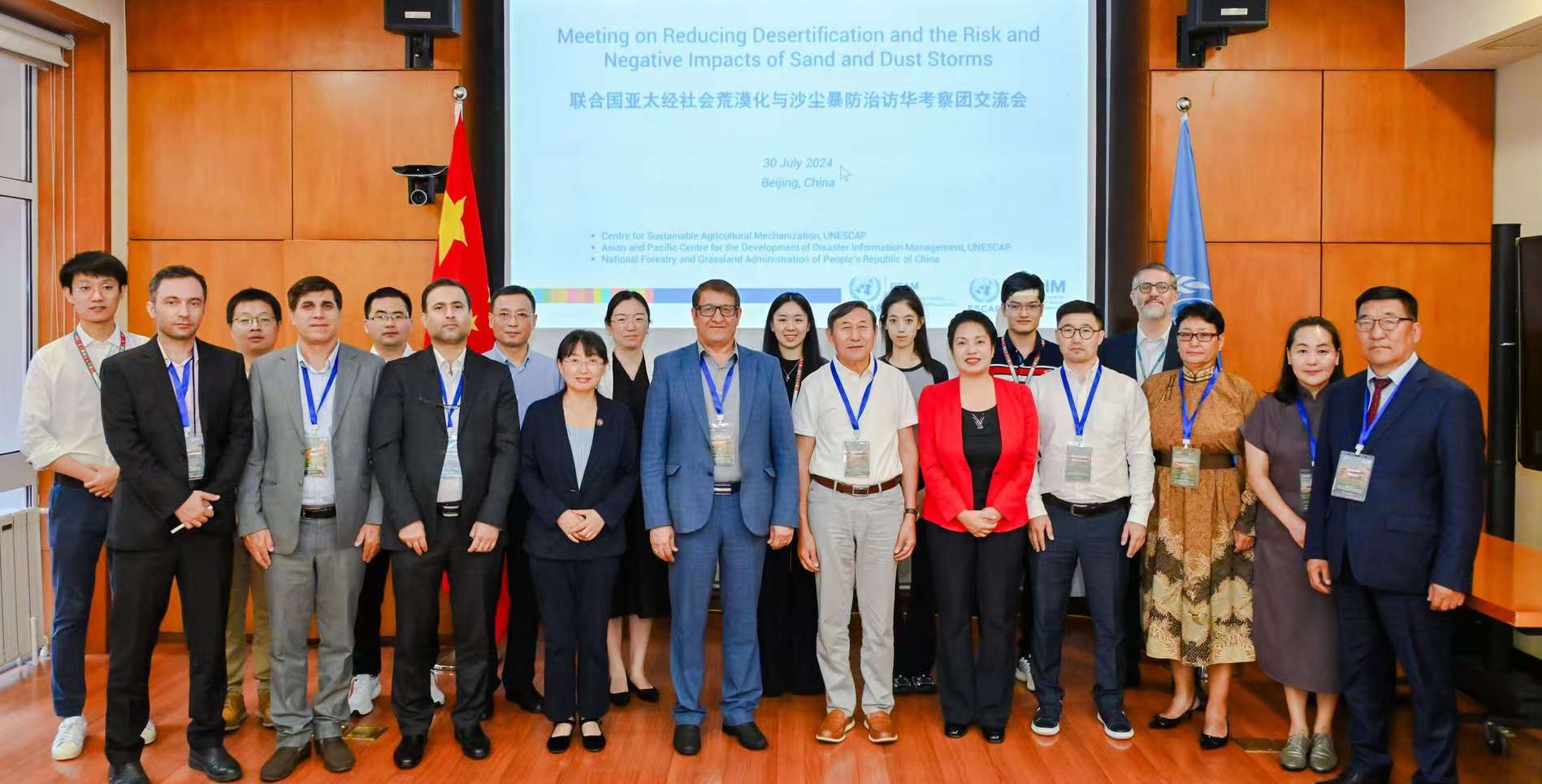ESCAP’s Regional Institutions Work Together to Address Desertification and Sand and Dust Storms
Meeting Documents

From 29 July to 2 August 2024, the Center for Sustainable Agricultural Mechanization (CSAM) of the Economic and Social Commission for Asia and the Pacific (ESCAP) organized the Study Visit on Reducing Desertification and the Risk and Negative Impacts of Sand and Dust Storms in collaboration with the National Forestry and Grassland Administration of People’s Republic of China and the ESCAP Asian and Pacific Centre for the Development of Disaster Information Management (APDIM). Nine representatives from the Islamic Republic of Iran and Mongolia participated in the study visit in Beijing and Inner Mongolia, China.

During the opening session held at the United Nations Compound in Beijing on 30 July 2024, the Head of CSAM, Dr. Yutong Li, highlighted the complexity of the desertification process, which is driven by both natural and human-induced factors. She emphasized the pivotal role of mechanization-based interventions, particularly innovative technologies, and practices, in mitigating, reversing, and halting land degradation and desertification tackling some of the unsustainable land management practices that are major contributors to loss of arable land, decreased agricultural productivity, and heightened vulnerability of communities to extreme weather events. She noted that these interventions enable more effective management of land resources through enhancing land use efficiency, improving soil health, reducing erosion, and increasing the resilience of agricultural systems to climate change crisis. Dr. Li further stressed the importance of strengthened cross-border and cross-sector collaboration in developing and delivering integrated solutions. Such collective efforts are essential in addressing the root causes of land degradation, desertification, and sand and dust storms.
Ms. Xiaoxia Jia, Deputy Director General of the Department of Combating Desertification of the National Forestry and Grassland Administration of the People’s Republic of China also attended the opening session and delivered opening remarks, followed by a video message from Ms. Letizia Rossano, Director of APDIM.

Following the opening session, leading experts from China, Iran and Mongolia presented their national context and efforts to tackle desertification and sand and dust storms. Prof. Feng Wang from the Institute of Desertification Studies, Chinese Academy of Forestry; Dr. Alimohamad Tahmasebi Birgani, Adviser to the Head of Department of Environment, and Head of the National Secretariat for Policy Making and Coordination of Sand and Dust Storms Management of the Islamic Republic of Iran; and Dr. Batjargal Zamba, Science Adviser, Information and Research Institute of Meteorology, Hydrology and Environment of Mongolia, outlined their respective countries’ strategies, experiences and expertise for addressing desertification and sand and dust storms challenges. Their presentations were followed by an interactive discussion to learn from each other’s solutions and innovative approaches.

The delegates visited the Chinese Academy of Forestry in Beijing and the Municipal Forestry and Grassland Administration of Ordos, Inner Mongolia. From 31 July to 2 August, field trips were also undertaken to several desertification control areas and facilities in Inner Mongolia, including the Exhibition Centre for Scientific and Technological Development of Desert Ecology at the Engebei Demonstration Zone; the project area with integrated management strategy for wind power generation and photovoltaic development in the Kubuqi Desert; the ecological development area at Yinken Sand Work Area; as well as the sandy land treatment area in the Mu Us Sandy Land, Ordos.


